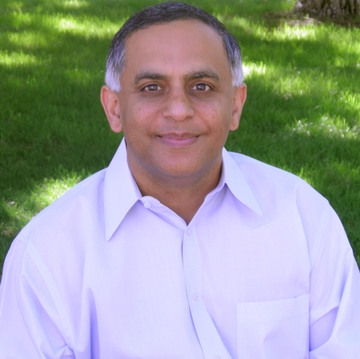Program Provides Research Opportunities for Undergraduate Students

Miner Improvements
Battle against Black Lung in NM Gets Second Wind with UNM Endowed Chair
"I knew this would happen. My dad and grandfather died of black lung, but I needed a good job and to get my kids through school; and this was it."
It's a common refrain, says UNM Pulmonologist Akshay Sood, MD, who hears variations on this theme whenever a new patient presents with the disease. "In New Mexico, black lung patients are pretty fatalistic."
As the disease intensifies, its victims feel weak and can't do the things they used to do, like hunting, fishing and working in the yard. "That's about the time they come to see me," Sood adds. "Miners usually present with a persistent cough, shortness of breath and increased phlegm production. They're coughing so much they can't lay flat. Most end up trying to sleep in the living room recliner, but with little success. Sometimes depression takes hold."
Sood, MD, a professor in the School of Medicine's Division of Pulmonary, Critical Care and Sleep Medicine, has been working with Miners Colfax over the past several years to address pulmonary diseases associated with the coal and uranium mining industries. He specializes in caring for patients with black lung and now holds a recently endowed chair focused on researching and treating the deadly disease, thanks to a $1.5 million gift from Miners Colfax Medical Center in Raton, N.M.
The partnership, which dates back more than 20 years, will sharpen its focus on black lung disease, caused by the inhalation and trapping of coal dust in miners' lungs. These particles activate the body's immune response, but because the invaders are not bacterial or viral, the response spirals. Consequently, tissue is damaged over time, ultimately degrading lungs and depriving victims of air.
"Several New Mexico counties have among the highest rates of death per capita nationally from lung disease," Sood says. "This commitment from Miners Colfax will greatly advance patient and community engagement, health screenings, education and so much more in our mining communities. At the same time, our pulmonary disease programs will intensify at the UNM School of Medicine and UNM Hospital."
"This is an important continuation of our 100-plus years of preventive and proactive care for miners through research-based medicine," says Miners Colfax CEO Bo Beames. "This will go a long way in positively affecting miners' care."
Miners' Colfax Medical Center opened in 1906 in Raton to provide acute and long-term care and related services, to the beneficiaries of the Miner's Trust Fund of New Mexico and the people of northeastern New Mexico. The medical center is known for its treatment of miners with lung disease.
Sood, who commutes to Raton monthly to see patients, helps with a mobile screening service that travels to mining communities, holding town halls and performing pulmonary tests, and chest and lung imaging. The screening service connects via satellite to experts in miners' diseases across the globe, making full use of telehealth technology.
"I lost my dad to a mine cave-in and had a pretty bad accident myself," says Raymond Rodarte, a former underground miner in Grants and Churchrock, N.M., who serves on the Miners' Colfax board of trustees. "This relationship will really strengthen important advocacy on behalf of the miners - especially for those who suffer from black lung. It's a horrible disease that might not reveal itself for years."
"Our collaborative program is unlike any in the U.S.," Sood notes. "This endowment will build on our existing relationship with Miners' Colfax and strengthen community engagement to include counseling of miners' benefits. It also will help attract faculty of national stature to work in clinical research and community aspects of miners' diseases."
